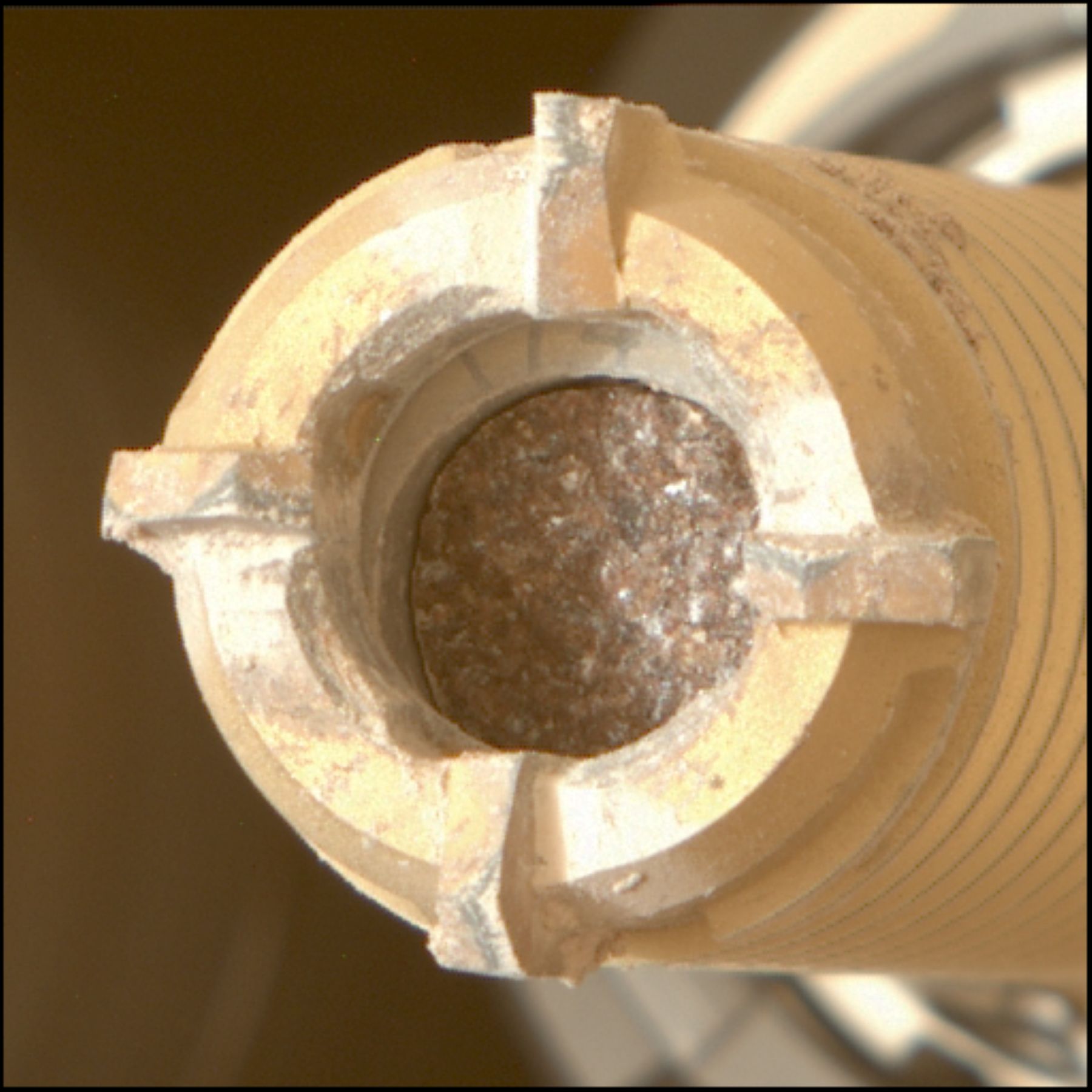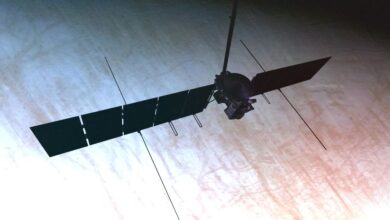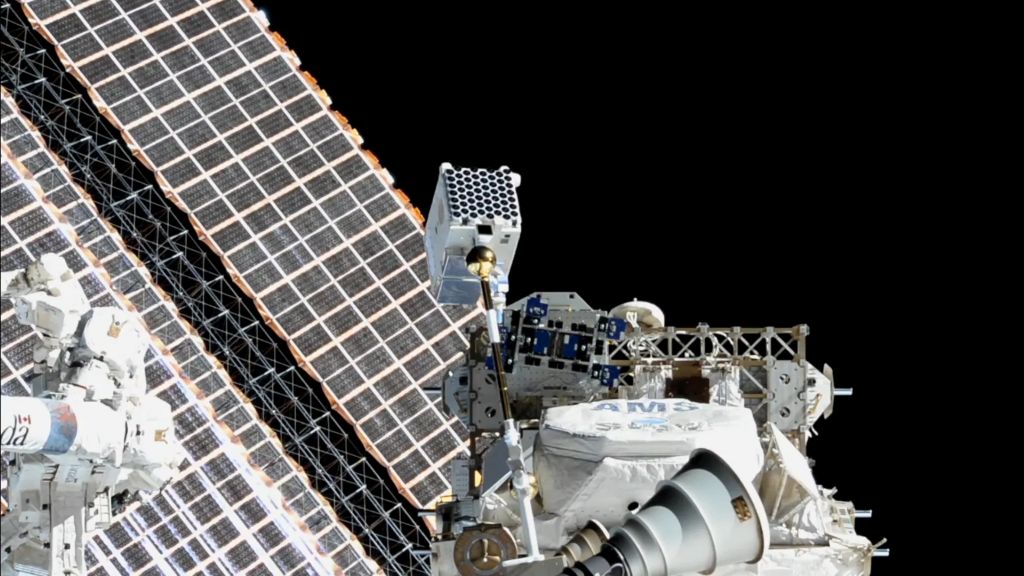Comet Geyser: Perseverance’s 21st Rock Core

After investigating the high-standing bedrock at the Bunsen Peak workspace deep within the Margin Unit, the unique nature and composition of this rock was deemed worthy for collection of Perseverance’s 21th rock core sample, Comet Geyser!
Bunsen Peak is named after a prominent peak in Yellowstone National Park, Wyoming, USA, and the namesake for Comet Geyser is the silica-sintered cone geyser also in Yellowstone National Park.
Although this rock’s origin remains under investigation and the rover team continues to explore different hypotheses, this core is particularly exciting because it appears to be composed primarily of two minerals: carbonate and silica. Carbonate and silica are both excellent minerals for preserving biosignatures (ancient signs of life). These minerals also have the potential to record the environmental conditions in which they formed, making them important minerals for understanding the habitability of Jezero crater billions of years ago.
The presence of carbonate within the Comet Geyser sample suggests that water, carbon dioxide, and chemical elements derived from rocks or sediments in and around ancient Jezero crater once reacted here to form carbonate. Carbonate minerals from Earth’s rock record are often used to reconstruct ancient climate–including conditions like temperature, precipitation, and aridity–and the history of life. Similarly, silica phases form when water interacts with rocks or sediments. The composition and crystallinity of silica can reveal the extent of the interaction with water, such as the intensity or duration of weathering and the pressure/temperature conditions during formation.
On Earth, biosignatures can be preserved in carbonate and silica for millions of years, or even billions of years in the case of silica. Some of the oldest evidence we have of life on Earth is from rocks that contain fragments of microbial cells that were “permineralized” by silica, a fossilization process that entombs the residues of ancient life and protects them from degradation. Thus, rocks containing these materials are considered among the highest priority samples for investigating whether Jezero crater was once host to microbial life. Perseverance’s 21th core sample at Bunsen Peak represents a significant milestone towards collection of a scientifically diverse set of samples for eventual return to Earth as part of the Mars Sample Return mission.
With rock core #21 now onboard, Perseverance presses forward towards its next strategic objective of investigating a location called Bright Angel, which is a light-toned outcrop exposed in the ancient channel wall of Neretva Vallis. Challenges may arise on this journey, as the terrain ahead is littered with sharp boulders and sand that are proving difficult for the rover’s auto-navigation system. The mission’s rover planners are working hard to manually navigate this tricky terrain. In the meantime, the science team is eagerly anticipating the secrets the rocks of Bright Angel may hold!
Written by Adrian Broz, Postdoctoral Scientist at Purdue University/University of Oregon





